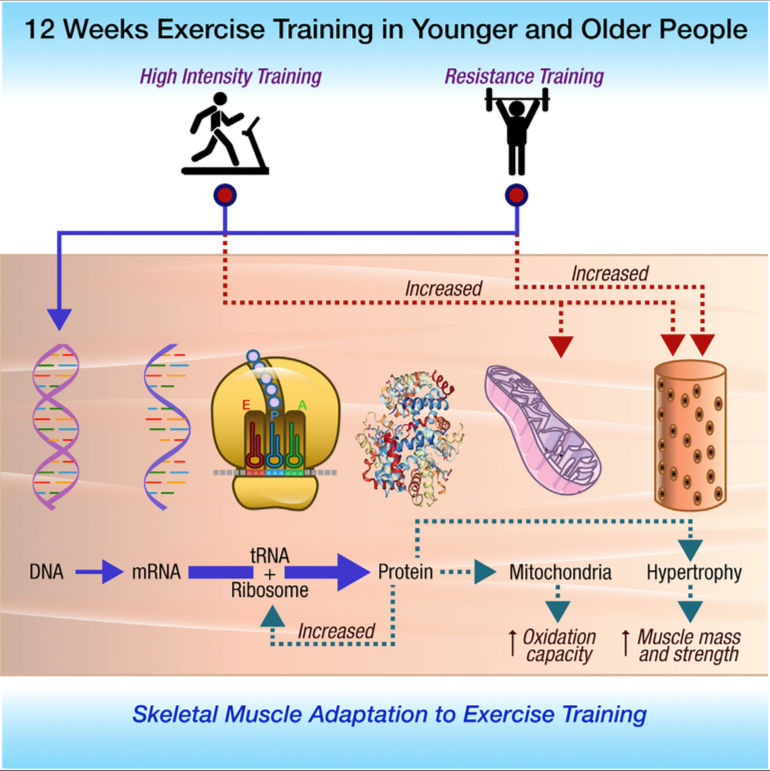
Who, what, why?
We know that you can use a number of different modes of exercise to improve strength and fitness. But what mechanisms each works by has not been completely understood and communicated, nor has whether these effects change with age. Now, a fascinating new study by researchers at the Mayo Clinic aims to describe the different mechanisms by which these improvements are achieved at the cellular level, starting with the DNA genes themselves, and ending up with changes in ability to use oxygen and muscle mass end strength.
What did they do?
The researchers recruited 45 younger (average age 25) and 27 older (average age 70) healthy, but sedentary participants. They took part in a 12 week exercise study. They were split into 3 exercise groups and one control group. The modes of exercise during the 12 weeks were:
- High Intensity Interval Training (HIIT) of 4 x 4 mins intervals 3 days per week cycling at >90% VO2 max. Plus 2 days per week treadmill walking.
- Resistance Training, consisting of lower and upper body exercises (4 sets of 8–12 repetitions) 2 days per week.
- Combined Training, consisting of 5 days per week cycling (30 min at 70% VO2 peak) and 4 days per week weight lifting with fewer repetitions than the resistance group.
What did they find?
HIIT was very effective in improving maximum aerobic capacity in young people, whereas lower intensities included in the Combined Training were just as effective in the inactive older population. Resistance training made no significant difference to the aerobic capacity of either age group:
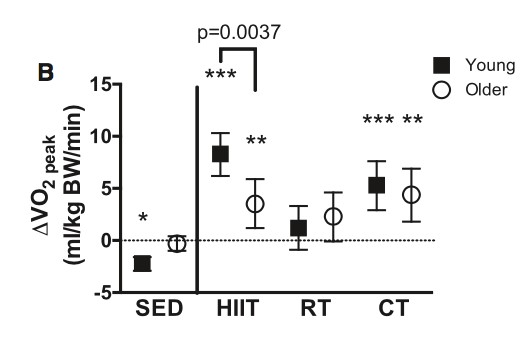
Resistance Training was very effective at improving the size & strength of leg muscles in both younger and older populations, though again the lower weights used in the Combined Training were just as effective in the older participants.
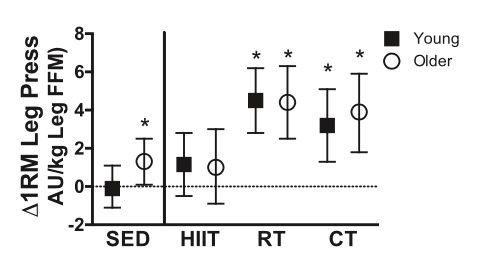
All exercise modes were effective at improving the rate at which glucose was removed from the blood (Rd), which is an indication of insulin resistance, the precursor of Type 2 Diabetes. This was not true for the older Combined Training group, where the effect failed to reach significance because some members of the group did not improve their glucose tolerance:
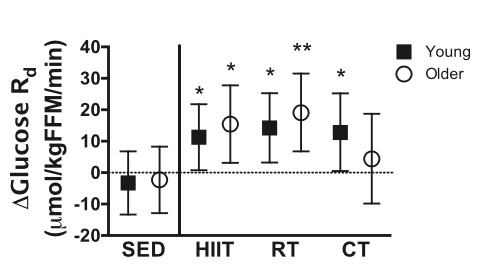
Whilst these results are consistent with many previous studies, this study went further in identifying the underlying mechanisms in translating gene expression to synthesizing the key components of the muscle fibers and mitochondria.
Mitochondria are the energy factories of the cells, and the density of them decreases naturally as we get older. The good news is that mitochondrial density can easily be improved through exercise training. It’s interesting to see that whilst all forms of exercise improved the synthesis rate in the older subjects (especially the combined aerobic and weight training), only HIIT provided sufficient stimulus in the younger population.
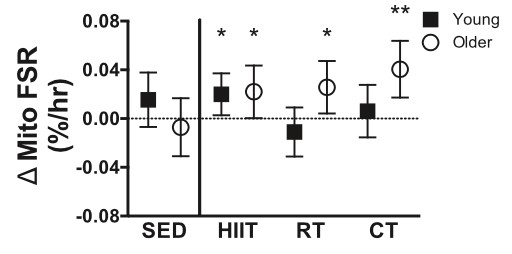
The charts below show how many genes were actively translated in the older vs younger groups following different modes of exercise. The x-axis is the change from baseline pre-training to post-training. In each case the more points past 1 on the x-axis and towards the top right, the more robust the gene expression after training.
In the older group, HIIT increased 22 genes responsible for increasing mitochondria:

Resistance training increased 35% and 70% fewer genes in young and old, respectively :
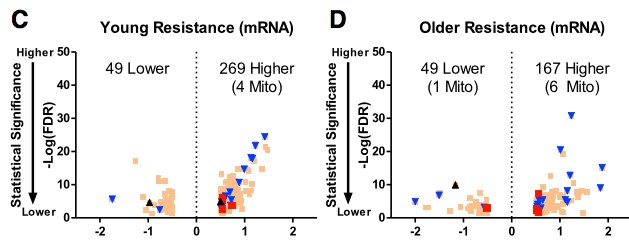
Whilst with Combined training, increased 28% and 84% fewer genes in young and old, respectively:

What does it mean?
The main physical benefits of exercise from a public health perspective are improved aerobic capacity, increases in muscle size / strength, and more efficient processing of glucose in the blood. Whilst resistance and combined training provided measureable benefits in both older and younger sedentary populations, HIIT produced by far the greatest gene expression. Interestingly, a set of gene transcripts were increased with HIIT in both young and older groups despite individual genes having either greater or lower content in older adults before training, demonstrating that HIIT induced a pattern of gene expression regardless of age.
Linking this back to heart rate variability (HRV) (as we like to do here at ithlete!), an interesting study by Ville Vesterinen found that recreational runners with higher baseline levels of HRV (about 75 on the ithlete scale) tended to benefit more from HIIT than from moderate intensity training. This fits well with the results of this gene study, since one of our previous summaries showed that 75 is an average HRV baseline for 25 year olds on the ithlete scale.
Reference:
Robinson et al., 2017, Cell Metabolism 25, 581–592 March 7, 2017 Elsevier Inc.
